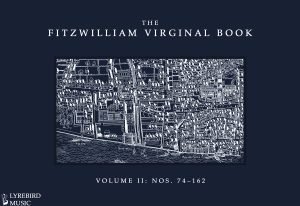LBMP–020: Heinrich Bach – Fünf Choralbearbeitungen (Five Chorale Settings)
From €9.39
ISMN: 979-0-706670-41-6 41 pages Edited by Richard Brasier
- The first in a series of editions featuring Bach family members
- Detailed preface containing information on the music and its performance
- Presented using both modern conventions and, as a second part, using the original clefs
- Two available formats
- Soft cover
- Tablet (PDF – one download available for 5 days)
Prices vary according to your needs. Please first choose the format you require.
Please note that if you are an EU customer, the prices include the VAT for your area. This is collected for orders under €150. EU customers whose orders exceed €150 will see the VAT until checkout, at which point taxes will be removed.
Heinrich Bach, the great-uncle of Johann Sebastian, was born in Wechmar in 1615, with his early training from his father Hans, and continued by his elder brother Johann. Following periods in Suhl and Schweinfurt, Heinrich moved to Erfurt in 1636. This was followed by his appointment as court and town musician of Arnstadt in 1641, where his duties included playing the organ at the Liebfrauenkirche and Barfüßerkirche. These two churches dominated musical life in Arnstadt until the arrival of Johann Sebastian at the Neue Kirche in 1703. Both churches where Heinrich was organist were significant large buildings, and whilst details of the Liebfrauenkirche organ at this time have not survived, the organ in the Barfüßerkirche of 1611 contained 26 stops over two manuals and pedal. It was enlarged in 1678 by Christoph Junge, with 28 stops, and this specification is given in the preface to this edition. No comment is made in the preface about the most interesting element of the enlarged specification, namely that the keyboards are C, D then chromatic in the bass, no short octave as it undoubtedly would have been, so much of that ‘enlargement’ would have been new or extended wind chests and extra bass pipes for all registers. In the second half of the 17th century in Germany there are other examples of this desire to be rid of the short octave, the most spectacular being the large new organ built by Stellwagen in the Marien, Stralsund in 1659. The significance of the short octave, or not, in these organs cannot be overemphasised, and the change in the Arnstadt organ would have made this a very up to date instrument which J S Bach would probably also have known!
There is apparently no definitive evidence that any of the compositions in this edition are by Heinrich Bach. Several of the works presented here are in copies by Walther, and have the initials H B in the MS, which it has been suggested might be (Johann) Heinrich Buttstett. Two shorter chorales have been sourced from the Weimarer Tablaturbuch and again without certain attribution. What we have here are quite short chorale preludes which could have been for either liturgical or domestic use. Pedals are not necessary, but have been suggested editorially in a few possible places, and there is only one low F# which falls outside the short octave, and would have needed the extended compass of the enlarged Barfüßerkirche organ.
Three chorales are set, Erbarm dich mein o Herre Gott, Christ lag in Todesbanden and Da Jesus an dem Kreauze stund, and the chorale themes are given separately. Two are duplicated in the short Fuga settings from the Weimarer Tablaturbuch. Interesting that one of these two Fugas specifies Tremulo, as today we don’t think of its use in counterpoint, much more just as colouration for solo lines perhaps. These are attractive and interesting works, with nice use of chromaticism in places, and the edition gives texts with G and F clefs, and also the original C and F clefs. There is an excellent preface and notes on sources, together with a couple of facsimiles of original texts. This is a nice scholarly edition, printed on fine paper, and these little chorales would be useful material for the modern-day church organist, just as they would have been used originally. I have just one misgiving, a purely practical one which I hope Lyrebird will correct, and that is that the printing ink is glossy on the page, which when the light catches across in some ways renders the notation invisible! Otherwise Lyrebird are to be congratulated on the quality of this publication.
Douglas Hollick
The Consort, Autumn 2022
Recent Posts
Your Shopping Cart
Archives
Categories
Recent Posts
- A Few Notes on Interpreting Louis Couperin’s Preludes March 27, 2025
- The Curious Life of Louis Marchand, Organiste du Roy March 23, 2025
- Grigny, Bach and Walter – A reappraisal of the sources March 22, 2025
- My Ladye Nevells Book: its history, scribe and the Byrd connexion March 20, 2025
- Adding ornaments to Grand siècle organ and harpsichord music March 15, 2025
Categories
- Blog (7)
- Testimonial (4)
- Uncategorized (1)




